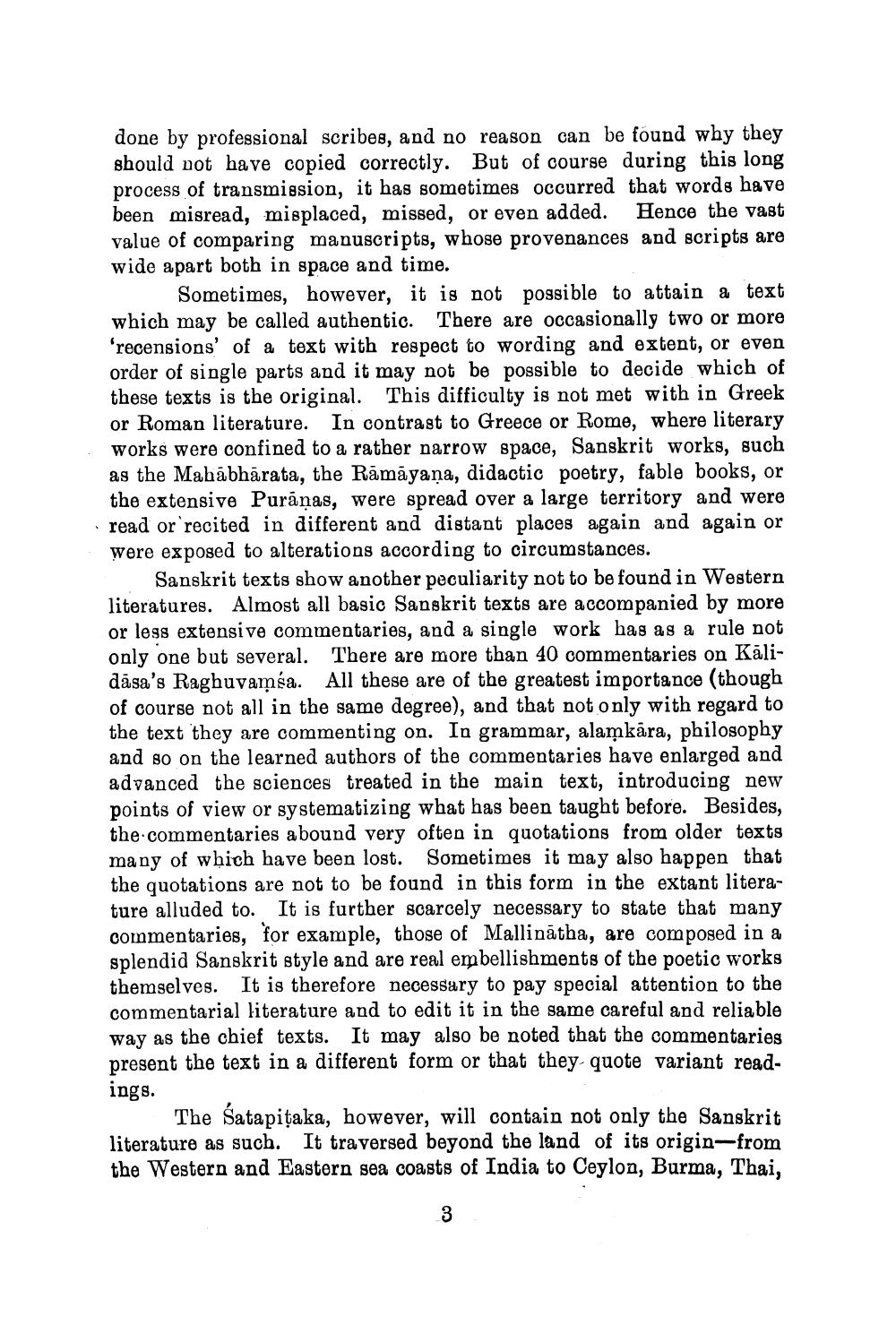Book Title: Satapitaka Author(s): Publisher: View full book textPage 3
________________ done by professional scribes, and no reason can be found why they should not have copied correctly. But of course during this long process of transmission, it has sometimes occurred that words have been misread, misplaced, missed, or even added. Hence the vast value of comparing manuscripts, whose provenances and scripts are wide apart both in space and time. Sometimes, however, it is not possible to attain a text which may be called authentic. There are occasionally two or more 'recensions of a text with respect to wording and extent, or even order of single parts and it may not be possible to decide which of these texts is the original. This difficulty is not met with in Greek or Roman literature. In contrast to Greece or Rome, where literary works were confined to a rather narrow space, Sanskrit works, such as the Mahabharata, the Ramayana, didactic poetry, fable books, or the extensive Puranas, were spread over a large territory and were read or recited in different and distant places again and again or were exposed to alterations according to circumstances. Sanskrit texts show another peculiarity not to be found in Western literatures. Almost all basic Sanskrit texts are accompanied by more or less extensive commentaries, and a single work has as a rule not only one but several. There are more than 40 commentaries on Kalidasa's Raghuvamsa. All these are of the greatest importance (though of course not all in the same degree), and that not only with regard to the text they are commenting on. In grammar, alamkara, philosophy and so on the learned authors of the commentaries have enlarged and advanced the sciences treated in the main text, introducing new points of view or systematizing what has been taught before. Besides, the commentaries abound very often in quotations from older texts many of which have been lost. Sometimes it may also happen that the quotations are not to be found in this form in the extant literature alluded to. It is further scarcely necessary to state that many commentaries, for example, those of Mallinatba, are composed in a splendid Sanskrit style and are real embellishments of the poetic works themselves. It is therefore necessary to pay special attention to the commentarial literature and to edit it in the same careful and reliable way as the chief texts. It may also be noted that the commentaries present the text in a different form or that they quote variant readings. The Satapitaka, however, will contain not only the Sanskrit literature as such. It traversed beyond the land of its origin--from the Western and Eastern sea coasts of India to Ceylon, Burma, Thai,Page Navigation
1 2 3 4 5 6 7 8 9 10 11 12 13 14 15 16 17 18 19 20 21 22 23 24 25 26 27 28 29 30 31
